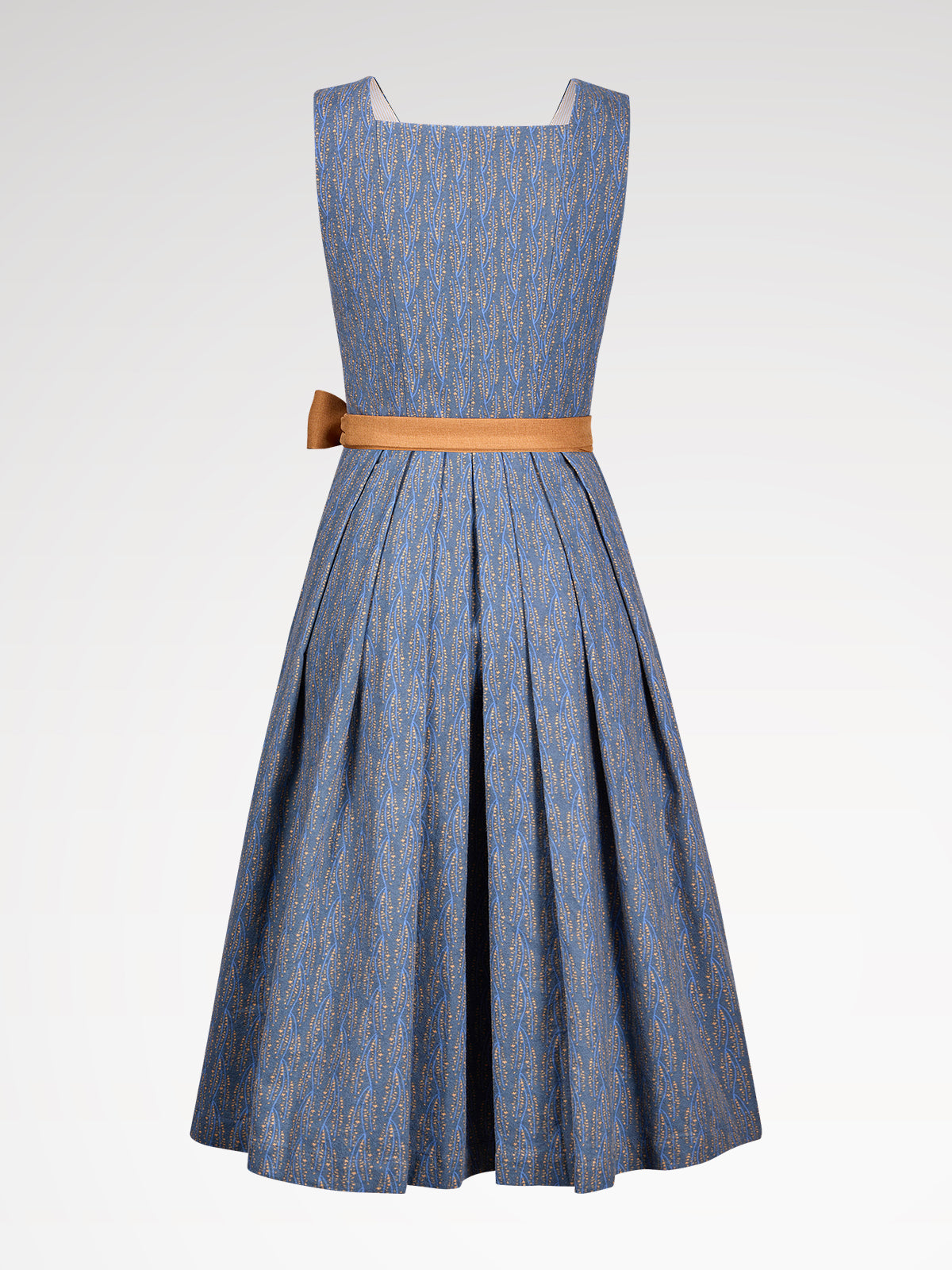The History of the Dirndl: From Work Dress to Fashion Icon
The dirndl has a long history, dating back to the days of Bavarian and Austrian farms in the 19th century. Originally, it was the working dress of maids and peasant wives—practical, robust, yet with a unique elegance. The name "dirndl" comes from "Dirne," which in ancient times meant a young woman or maidservant, which was by no means derogatory at the time.
The clothing was made of simple fabrics such as linen or wool and was often hand-sewn. But over time, perceptions changed. Over the decades, the dirndl became increasingly more magnificent and ornate. These initially functional dresses were enhanced by elaborate embroidery, fine fabrics, and exquisite details. Today, the dirndl is not only a symbol of Bavarian identity, but also a festive garment appreciated by fashion connoisseurs and enthusiasts alike.
The green dirndl: A real eye-catcher
The green dirndl is one of the most popular variations of the traditional garment. The color green has a special symbolism: It represents nature, freshness, and vitality—perfect qualities for a celebration taking place amidst the Bavarian countryside. Whether in a deep, rich green or a vibrant, fresh green, the green dirndl suits every style and every mood.
The green velvet dirndl is a particularly luxurious version. The velvet fabric provides a pleasant feel against the skin and lends the outfit an opulent look. Especially on chilly Oktoberfest evenings, the velvet offers pleasant warmth while still looking elegant. The blend of tradition and luxury makes the green velvet dirndl a preferred choice for those who want to experience Oktoberfest in style.
For those looking for something fresh and modern, the mint green dirndl is a trendy alternative. Mint green is always on trend in fashion and brings a fresh twist to Bavarian tradition. It's ideal for those who want to stand out from the crowd and wear a modern yet tradition-conscious outfit.
How to integrate the dirndl into everyday life
The dirndl isn't just reserved for Oktoberfest or other festivities. With a little creativity, it can also be integrated into everyday life. Here are some ideas for wearing the traditional garment in a new way:
1. Streetwear combinations
Instead of the traditional skirt, you can combine the dirndl top with jeans or black trousers. A green dirndl top with a thin leather jacket and sneakers creates a modern, urban outfit that also has a nostalgic touch.
2. Casual looks
The dirndl can also be worn in a loose, casual look. A green dirndl top with a long cardigan and comfortable boots is perfect for an autumn afternoon or a stroll in the park. It's a great example of how tradition and modernity can harmoniously come together.
3. Accessories take the lead
Accessories can also enhance the dirndl and adapt it to your own personality. Silk shoes, a headband, or an elegant scarf can individualize the garment and emphasize your own style. This, too, demonstrates the versatility of the dirndl: It can be combined both discreetly and strikingly.
The sensory impressions of wearing a dirndl
Wearing a dirndl is not just an external experience – it is a sensation that appeals to all the senses.The soft fabric of a green dirndl velvetThe dress glides smoothly over the skin, conveying a feeling of comfort and elegance. The color green has a calming effect and makes you feel connected to nature and the Bavarian landscape.
The dirndl's embroidery and details invite you to play with your fingers and admire the craftsmanship. Especially with traditional dirndls, there are often intricate patterns on the bodice or skirt hem that tell stories and traditions. Wearing a dirndl makes you feel simultaneously transported to the past and present—a feeling difficult to describe in words.
A sudden turning point: Modern designers and the future of the dirndl
While the dirndl is traditionally associated with festive occasions and Bavarian culture, modern designers have reinterpreted this garment. One of the most outstanding figures in this field is Lena Mayer, a young designer from Munich. With her collection "Dirndl 2.0" shown that the traditional garment is not only suitable for Oktoberfest.
Mayer's innovative approaches include the use of sustainable materials, unusual cuts, and modern colors. Her designs are not only stylish, but also sustainable and contemporary. A special highlight of her collection is the green dirndl, which she refined with innovative techniques and materials. It is proof that tradition and innovation can go hand in hand.
Trends and future of the dirndl
The fashion industry is showing growing interest in traditional garments like the dirndl. Here are some of the current trends and possible developments:
1. Sustainability in the foreground
More and more designers are turning to environmentally friendly materials and production techniques. The green dirndl velvet could be made from recycled or biodegradable materials in the future to meet sustainability requirements.
2. Individualization
The ability to customize your dirndl according to your own wishes and needs is becoming increasingly important. From the choice of fabric and color to accessories, there are numerous ways to make your dirndl a unique piece. For example, you could dirndl mint green with unusual embroidery or modern cuts to adapt it to your own personality.
3. Integration into everyday life
The dirndl is increasingly becoming a part of everyday fashion. Whether as streetwear, in a casual look, or as an accessory – the dirndl demonstrates that tradition and modernity can not only coexist, but also mutually enrich each other.





Leave a comment
This site is protected by hCaptcha and the hCaptcha Privacy Policy and Terms of Service apply.